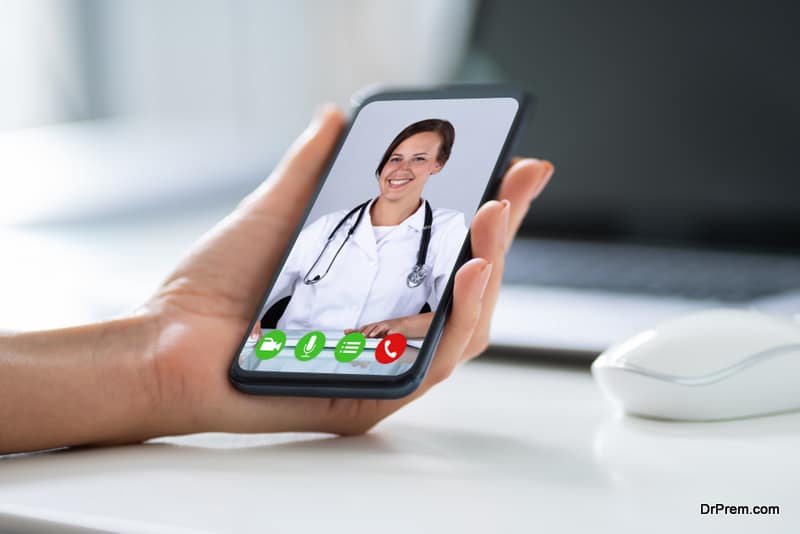Technology has reshaped human life in so many amazing ways, and the healthcare sector is no exception.
Healthcare practitioners and patients have both benefitted from new medical technological procedures. Technology has enriched the nursing profession by enabling nurses to become more efficient and deliver better patient care services. Automation has helped nurses to achieve their daily tasks more quickly by having prompt access to medical records and effective channels of communication. Technological advancements in the nursing profession have also helped lower human errors resulting in better care for patients.
Following are some other tech integrations in healthcare that enhance the nursing practice.
1. Online Nursing Programs

As the healthcare landscape is continuously evolving and upgrading technologically, the nursing staff must adapt accordingly along with these advancements. Specialized care such as intensive care units (ICUs), emergency treatments, and recovery rooms require nurses equipped with the highest medical and technical knowledge level. Therefore, it is essential for nurses to continually find ways to upskill and perform better at their jobs.
Technology has made it extremely easy to acquire relevant medical qualifications alongside the clinical experience. Nurses can now – and are – actively enrolling in online learning programs to get onto the correct nurse practitioner pathway for better career options. These degrees also help nurses enhance their existing skills and adapt to the latest technological advancements in healthcare.
2. Smart Bed Technology
Smart beds are pretty helpful in keeping track of the patients’ vitals, movements, and weight. Nurses now do not have to spend too much time taking patient vitals as these smart beds do most of the work for them. The bed is equipped with sensors and software and can be connected to monitors. This helps track the patients’ health and identify new patterns as treatment progresses. It also helps save time and effort for the nurses.
Smart beds also help in keeping patients safe from any falls. When patients move, the bed automatically triggers a warning, notifying the concerned nurse. This feature is especially beneficial while looking after patients who are of age or require assistance while moving.
3. Electronic health records

Electronic health records (EHR) have taken precedence over the old ways of manually filing patients’ paperwork. These are a digitalized form of patient records that contain information such as laboratory reports, medical history, medications, notes, etc.
Electronic health records have improved data accessibility making it extremely easy for healthcare practitioners to study patients’ conditions and suggest treatments. These can also be used to generate prescriptions so that patients don’t have to visit a hospital every time they run out of their meds. What’s even better is that nurses can access this data from anywhere they want and do not necessarily have to carry physical records of patient history.
4. Portable Monitors
Due to the challenging nature of work, nurses have to handle multiple tasks at one time. Healthcare innovations such as portable monitors help nurses check on a patient’s vitals even if they are at a distance. Nurses can be alerted immediately if an emergency occurs. This helps to save the lives of patients receiving critical care.
Portable monitors also reduce the need for paper and related stationery. Not only do these devices make nurses more efficient, but they also help to reduce fixed costs in healthcare management.
5. Automated IV Pumps

Automated IV Pumps help to control the medicine dosages and drips administered to patients. These devices reduce the chances of over dosage that can occur while using manual drips. It also saves nurses time and allows them to concentrate on more critical tasks or simultaneously handle multiple patients. The integrated software systems and medical technology can alter the drip doses without waiting for manual changes.
Automated pumps also help to reduce human contact the chances of transmitting viral infections via regular injections.
There are different kinds of pumps that offer nutrition to patients who cannot feed themselves. Similarly, there are IV pumps that help patients to control their pain medication.
6. Wearable Devices
Smartphones and mobile applications are pretty handy in tracking patient information. Likewise, wearable devices have several benefits for the nursing practice. These devices allow nurses to communicate with each other in a hospital facility in case of emergencies, track patient vitals, and access medical records while on the go. Wearable devices allow access to large amounts of data such as heart rates, blood pressure, breathing sounds.
7. Telehealth

Telehealth has revolutionized nurses’ care delivery approach. In the wake of the current pandemic, Telehealthhas enabled nurses, other healthcare practitioners to deliver virtual care for low-acuity patients while ensuring no risk of contractingthe virus.
Patients can now receive medical advice from qualified nurse practitioners without having to visit a healthcare facility. Telehealth ensures that patients don’t have to wait for months to get the help they need, and in fact, have access to expert advice on-demand.
Telehealth has also proved to be a vital instrument in critical cases, as during the pandemic, hospitals across the globe resorted to tele-ICU applications. Gadgets like high-definition cameras, telemetry, and access to a multidisciplinary team of doctorshave enabled nurses to remotely monitor ICU patients and ensure cost-effective care delivery systems by streamlining clinical workflows and enhancing patient outcomes.
Conclusion
Nurses are the key drivers of healthcare change as they are the frontline workers for healthcare services. The integration of technology in healthcare processes is transforming the nursing profession by enabling them to deliver efficient patient care. Emerging technologies like portable mobile units and digitized health records provide nurses with critical insights to easily communicate to other physicians for consultation. With the increasing population, shortage of nursing staff, and chronic conditions on the rise, the healthcare industry needs to embrace these technological advancements for increased efficiency. A skilled and trained nursing staff combined with medical technologies can provide seamless healthcare services and greatly benefit patients.
Article Submitted By Community Writer




